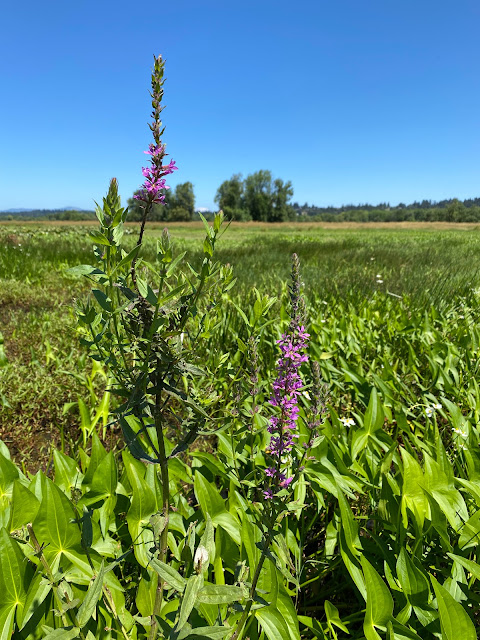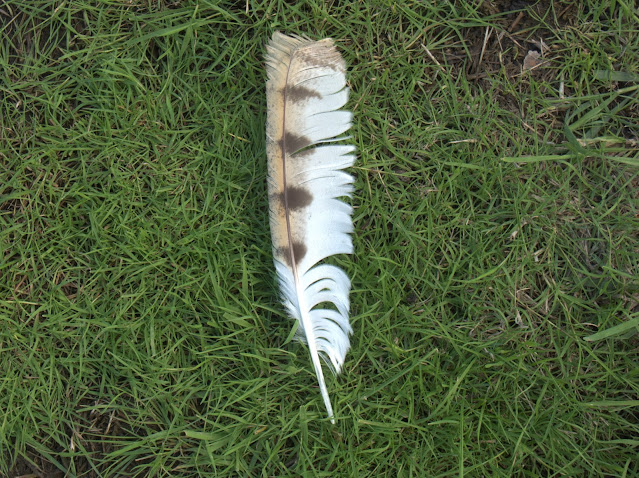Goodbye Winter, Hello Spring!
 |
| Photo: Pacific chorus frog |
As someone from Ohio, I am never sad to say goodbye to winter. I never miss the snow, or cold rainy days when you can never seem to get warm, or when the sun is already setting as you get off work at 4:30pm in the afternoon. Needless to say, I am glad that spring is here. Since this is my first spring working at the Refuge, it has been exciting to see all the flora blooming and the wildlife embracing the warmer weather.
As you might recall, the Refuge had it's first successful Sandhill Crane (Grus canadensis) colt fledge last year (2021). In Washington state, Sandhill Cranes are listed as endangered. Similar to many other bird species, Sandhill Cranes mate for life and everyone at the Refuge has been on high alert in the hope that they will return to nest again this year. We
have limited all habitat restoration activities near the area where the
cranes nested in the past; hopefully, with the added privacy and security,
this will entice them to successfully produce another colt. Recently, while driving to work, I was fortunate enough to witness a pair of cranes performing their courtship dance, which is an elaborate display composed of jumping, wing flapping, and head bobbing. With luck, we may be seeing another sandhill crane colt within the next few months.
High Tunnel Update
 |
| Photo: Red-tailed hawk perched on the high tunnel |
Since it's construction in 2019, the high tunnel has been essential to the growth and production of new plants for the Refuge. Managing a high tunnel is a new experience for me and it has been fascinating to learn how to propagate plants native to the Pacific Northwest. You might be surprised to learn that I loathed botany in school; to me, it was incredibly boring to learn about plant anatomy and photosynthesis (a process I will never understand nor have the bandwidth to retain). I very much preferred learning anything and everything about animals, hence my degree in animal science. However, working at the Refuge has given me a new appreciation for plants. I realized that I staunchly prefer learning about plants while being outside rather than sitting in a dull classroom staring at a text book. If only more schools taught botany in the field, students might have a greater appreciation for plants and the outdoors, but I digress.
Over the past month, I have been harvesting common trees and shrubs found on the Refuge to be propagated in the high tunnel, such as: red osier dogwood (Cornus sericea), Oso-berry (Oemleria cerasiformis), snowberry (Symphoricarpos albus), Douglas spirea (Spiraea douglasii), wild rose (Rosa nutkana), Pacific wax myrtle (Morella californica), and Pacific Ninebark (Physocarpus capitatus). Propagating plants is surprisingly easy and even the most novice gardeners can easily produce new plants. For a step-by-step guide on how to process and propagate plants, please read former Habitat Technician Emily's post on the high tunnel from October 2020 (Click Here).
 | |
| Photo: Harvested cuttings of Pacific Ninebark to be processed |
 |
| Photo: 6 to 8 inch processed cuttings of Pacific Ninebark |
 | ||||
Photo: Raised planting bed full of hundreds of newly harvested cuttings
|
The processed cuttings are placed in a raised bed comprised of sand and Perlite (used to improve drainage and aeration) where they will form roots and eventually be transplanted into pots with potting soil. Once the plants have reached their full growing potential in the pots, they will be planted in the field and eventually provide both food and habitat for wildlife. I find processing and re-potting plants to be quite relaxing especially while listening to a good science podcast or audiobook.
Happy planting!
-Justine Casebolt



Comments
Post a Comment